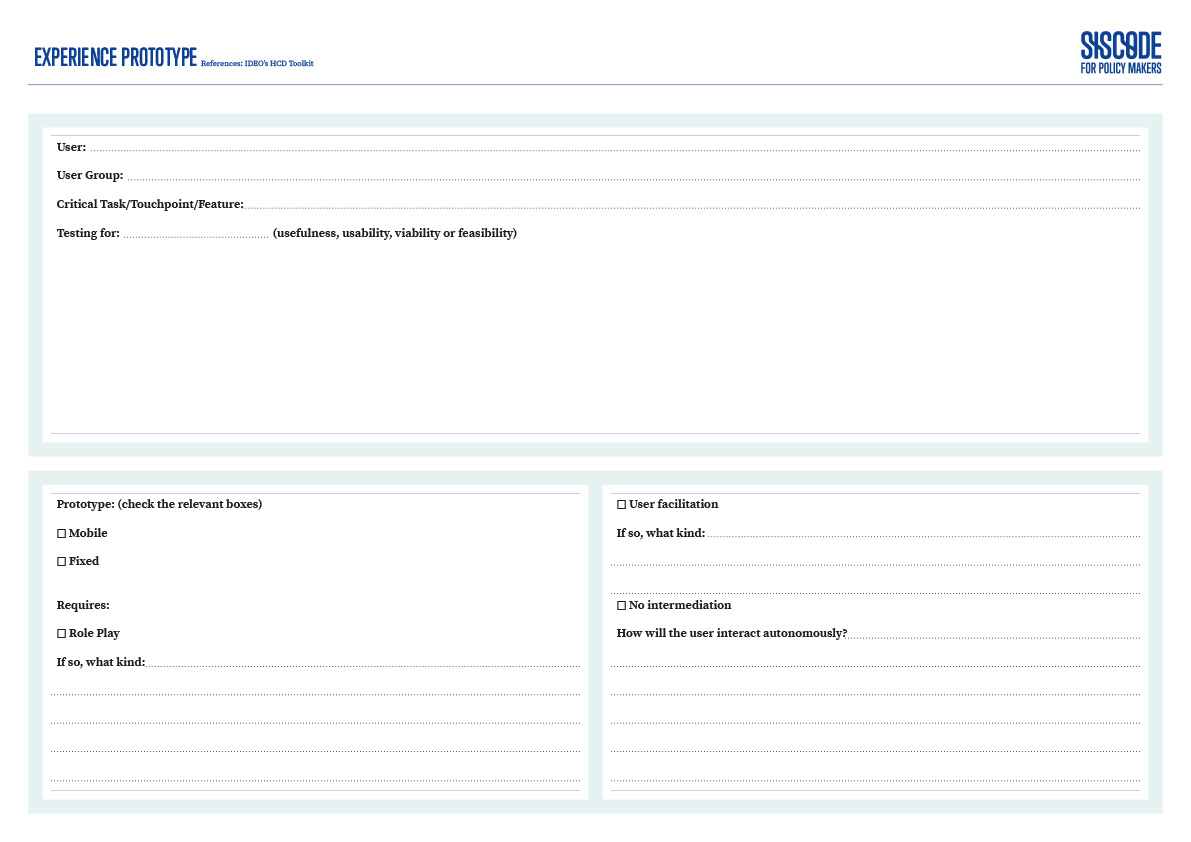Complexity: Medium
Time required: 3-4 hours
Material required: poster board, post-its, markers, pens, paper, cardboard, clay, etc.
References: IDEO’s HCD Toolkit, www.designkit.org
What is it for?
Experience prototyping allows you to build to think better by making certain features of the service/product tangible through cheap, disposable tools. This allows for quick idea validation and feedback in realistic terms. The results of the interactions with the prototype allows for deeper understanding of the idea and for improvements to be made.
How to use it?
The first step is understanding the question that your prototype should answer: usefulness, usability, viability or feasibility. Once this has been identified, individualize the connecting features that need to be tested and what kind of prototypes should be made. It is best to review the value proposition of your idea as made in your business model canvas.
Prototypes can be:
- paper models of the touchpoint to test out with users through role play (e.g. the point of sale, the reception desk, the waiting room/lobby,
the shopping aisle, etc.) or mock ups of digital interfaces; and/or - storyboards of the customer journey to be gone through with potential users.
Once the prototypes have been made, it’s time to get out of the door (if your prototype is mobile) and collect feedback from potential users. If you can’t move your prototype, you’ll need to find ways to get potential users to come to you. Feedback should be collected on how they interact with the prototypes and any problems that surface. Remember to let the user have as much autonomy as possible and to stay in “character” when role playing.


